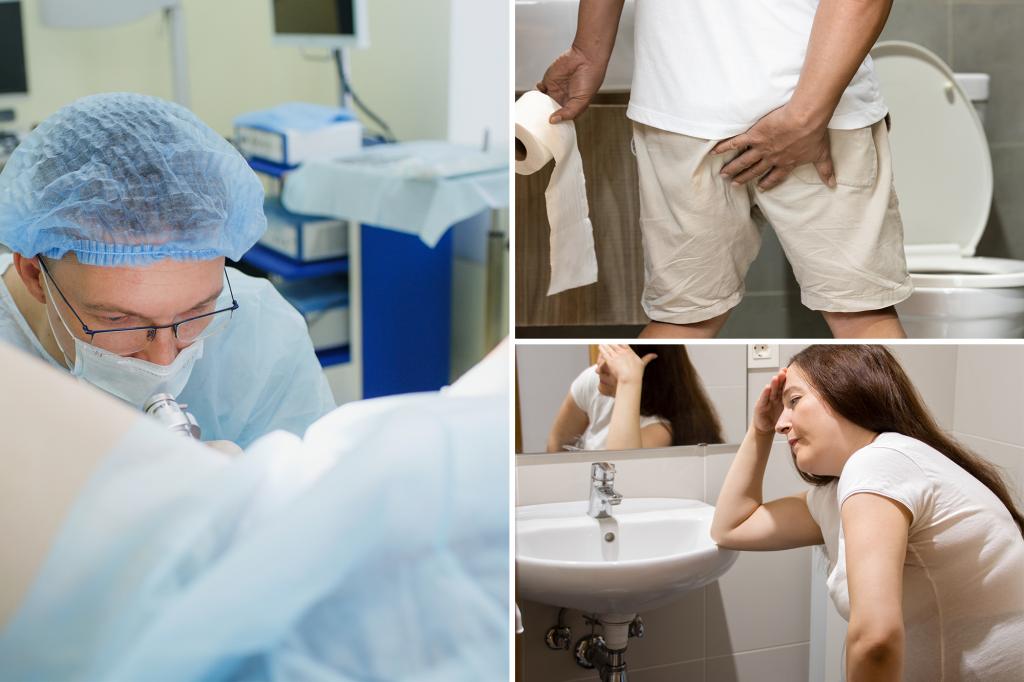No need to crack under pressure.
Each year, an estimated 250,000 Americans suffer a small tear or crack in the lining of their anal canal, which can lead to painful and bloody bowel movements.
“Anal fissures are incredibly common, especially among people who engage in anal sex,” Dr. Evan Goldstein, founder and CEO of Bespoke Surgical in Manhattan and the Future Method sexual wellness brand, told The Post.
“They can be caused by a number of things: sometimes it’s muscular, like spasms or tightness during bowel movements or bottoming,” added the anal surgeon, who goes by “Dr. Butthole.” “Other times, it’s structural: thinner skin or tissue that simply can’t accommodate penetration or pressure, which we often see in women.”
It sounds really tear-ible, but Goldstein reports that there are three major ways to wipe out anal fissures.
Here’s what you should do to prevent — and treat — this gaping problem.
Anal fissure symptoms
- Brutal and annoyingly persistent pain that feels like you’re pooping glass
- Blood
- Spasms or tightness in the muscle
- Burning or itching around the anus
- A visible tear in the anal skin
- Constipation
Most fissures start acute — around 50% or more heal on their own.
Left untreated, a fissure can progress to a chronic problem.
“The tissue becomes fragile and prone to re-tearing,” Goldstein explained. “You might develop skin tags or scar tissue that affects both function and appearance.”
At-home remedies
If you’re dealing with a new fissure, the tush technician typically recommends this protocol for a week.
- An over-the-counter stool softener like Colace three times a day
- A fiber supplement such as Metamucil
- Calmol 4 suppositories twice a day
- Sitz baths with Epsom salts
- A prescription compound ointment (pea-sized amount of Lidocaine 2% / Anusol 2.5% / Cardizem 2%) that is applied at night, in the morning and after bowel movements
- High-fiber foods like grains, fruits, veggies, legumes and seeds
- Eight to 12 10-ounce glasses of water daily
- No caffeine because it dehydrates
- Gently wash and blow dry the area.
- Limit wiping and don’t use baby wipes or medicated pads because they can contain chemicals that delay healing.
Healing takes time — try to be patient.
“The area is delicate, and every bowel movement is a potential setback,” Goldstein said. “But don’t avoid pooping.”
If there’s no improvement after five to seven days, or if it’s a recurring issue, it’s time to see a specialist.
An evaluation can include a physical exam, anoscopy to examine the anal canal and rectum, anal manometry to assess the anal and rectal muscles and a skin analysis.
From there, Goldstein suggests one of three paths.
Acute care
Topical therapies, such as prescription creams, suppositories and stool softeners, aim to reduce inflammation.
“Once symptoms stabilize,” Goldstein said, “we introduce at-home anal dilation using the Future Method Glass Anal Dilators and then the Future Method Silicone Anal Cone to gently train the area.”
Dilation is like physical therapy for your butt, helping to manage scar tissue and improve muscle tone.
The glass dilators focus on the deeper muscle mechanics and the mind-body connection, while the silicone cone targets the skin and rim tissue.
Botox and tissue optimization
You’ve heard of Botox, but did you know there is Butt-tox?
“For more chronic or recurrent fissures, anal Botox has been a game changer,” Goldstein said.
“It works by temporarily relaxing the anal muscles to reduce pressure and allow healing.”
Butt-tox typically lasts three to four months.
Goldstein tends to recommend two or three in-office rounds, paired with at-home dilation and pelvic floor therapy.
“We also use a radiofrequency device called TempSure to stimulate collagen production in the anal tissue,” he said.
“This specialized treatment thickens the skin, improves elasticity and helps the tissue better tolerate pressure from both bowel movements and sex.”
Fissure surgery
“When a fissure has progressed to scarring or excess tissue, Botox alone won’t cut it,” Goldstein said.
“Many people come to me after failed treatments elsewhere.”
The scar tissue needs to be surgically removed to rebuild the area with healthy, pliable skin.
Patients can usually return to the gym and basic activity within five days of anal fissure surgery. They can resume masturbating and vaginal sex one to two weeks after the procedure and anal play and sex by the third month.
Dilation and physical therapy help with long-term success.
Prevention of fissures
“It all comes down to pressure — too much of it, from too many angles,” Goldstein said.
“Hard bowel movements, pushing too hard, sitting too long, skipping lube or using the wrong kind, toys that are too big — or too pointy — all of these increase your risk of fissures.”
Here’s what to do instead:
- Stay well-hydrated.
- Take two fiber capsules at night and two synbiotics (a mixture of probiotics and prebiotics) in the morning.
- Don’t sit on the toilet too long or strain.
- Try to clench less when squatting at the gym.
- To prep for anal sex, focus on dilation work to relax the muscles, strengthen the skin and build tolerance.
- Use more lube than you think you need — and go for silicone lube because it’s slicker and longer-lasting than water-based lubes.
- Start on top to control depth and pace. Go slow and know when to stop, especially if it’s too much too fast.
- Be careful with chemsex — using drugs to enhance sex — because you can lose the ability to feel injury in the moment.
Read the full article here

